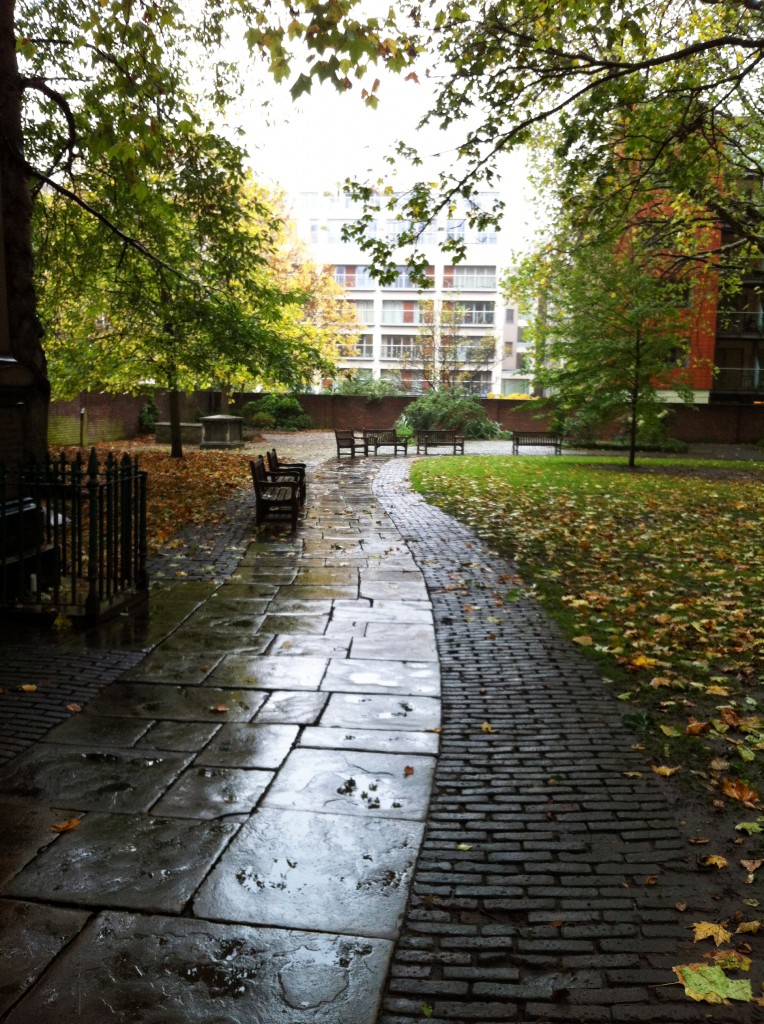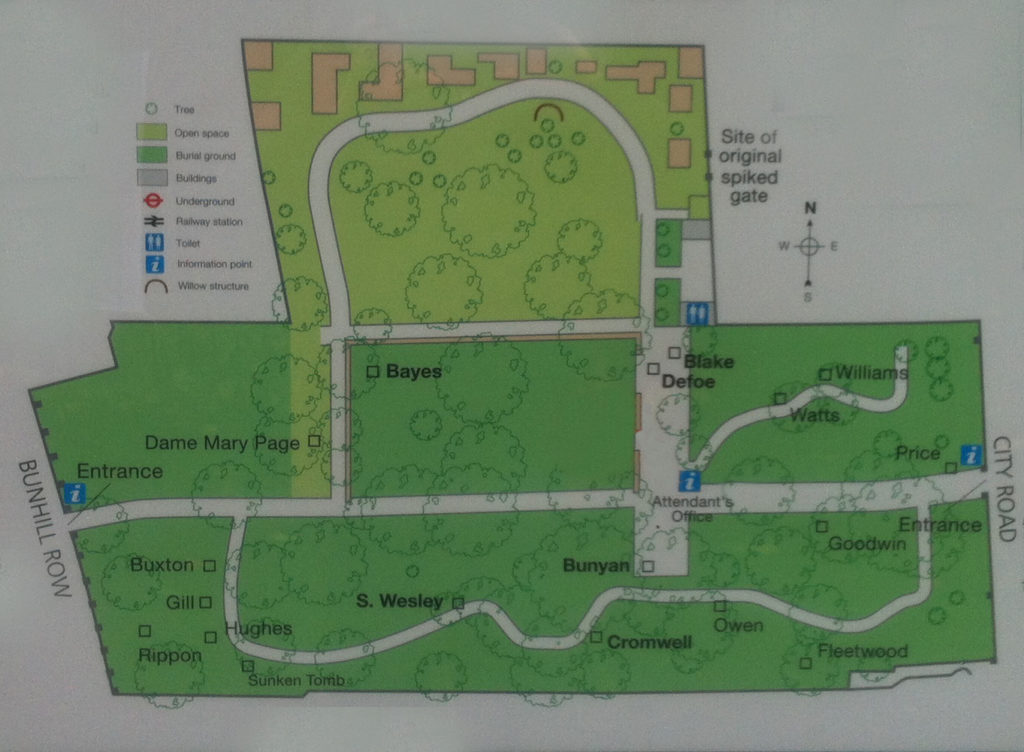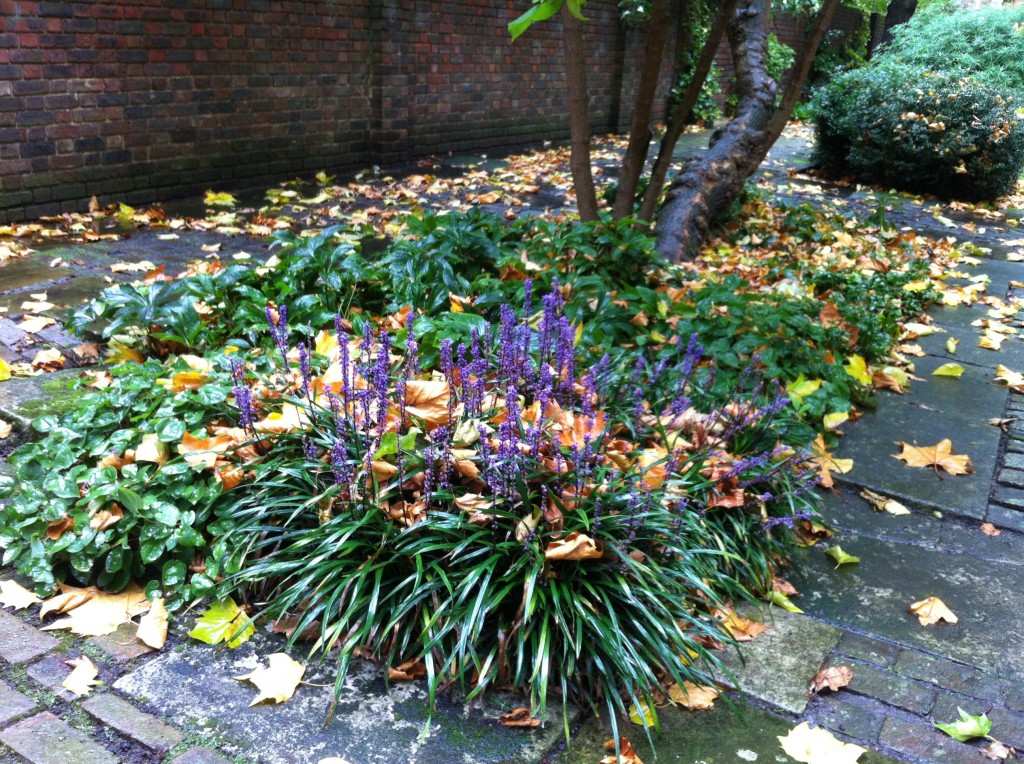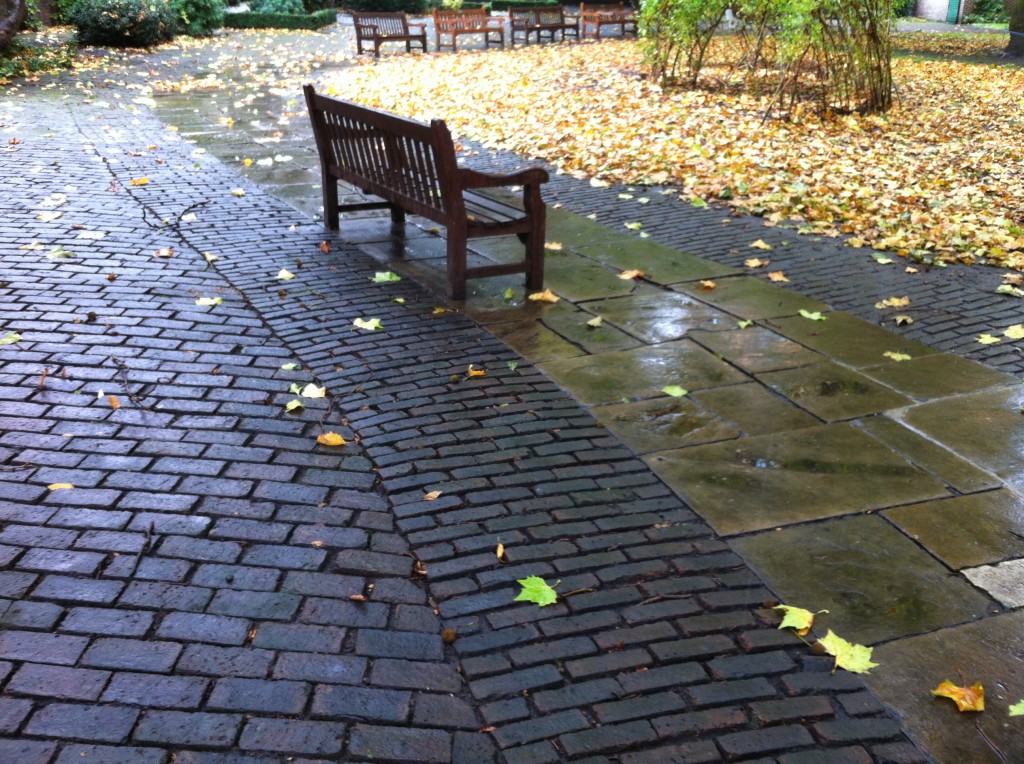About a week ago, I was in London for a day of appointments. With about 45mins to spare between meetings I took a stroll through Bunhill Fields. For those of you that don’t know it, this ancient Graveyard just outside the old City of London walls has been a burial site for at least a thousand years. Amongst the 123,000 people known to have been buried there before it was closed for interment in 1854 were many famous literary and non-conformist figures from the nineteenth century including Daniel Defoe, William Blake and Susanna Wesley.
Anyway, so much for history. I had scurried though this space on a number of occasions before – indeed our office used to be located close by when we first started up. This time however, I tarried a little and discovered something that fascinated me. After the Second World War, Bridgewater and Shepheard were engaged to carry out improvements to the graveyard. Peter Shepheard, who was one of the leading young landscape architects of his generation, re-planned the memorial gardens to the north part of the site. The work is unmistakeably English and of the post war modern movement. Peter Shepheard’s great strength was the effortless simplicity of his designs. Like many of his peers, he was completely comfortable with the Edwardian arts and crafts heritage, and did not see it as a millstone in the way that later generations did. The smooth lines of the Yorkstone path, edged with brick sweeps confidently through the grass beneath the huge plane trees that define the space. In contrast the [relatively] small orthogonal beds with evergreen shrubs, Liriope, Vinca and other plants typical of the period are a pleasantly restrained contrast. The use of fallen gravestones is both practical and I would argue reverential whilst giving a nod to the history of the site.
I have fond memories of Peter (as he liked to be known) or Professor Sir Peter Shepheard PPRIBA, PPILA, as he was when I knew him (there were probably a few other letters that I have forgotten.) He was an modest man, full of stories of his colourful career. I was lucky enough (with Chris Bowles) to work on the restoration of Charlston Farmhouse. We also worked on Winfield House (in Regents Park) and a few smaller projects. I particularly remember Peter’s wonderful pencil sketches and his plans, all in pencil and filling the sheet completely to the very edge with a sort of evenness of texture and graphic. As well as having a keen understanding of space, he was also a master of herbaceous planting (unusual for someone who had trained initially as an architect).
Perhaps we have something to learn from the gentle and unselfconcious blending of style shown here. Have we really learnt so much in 65 years?





